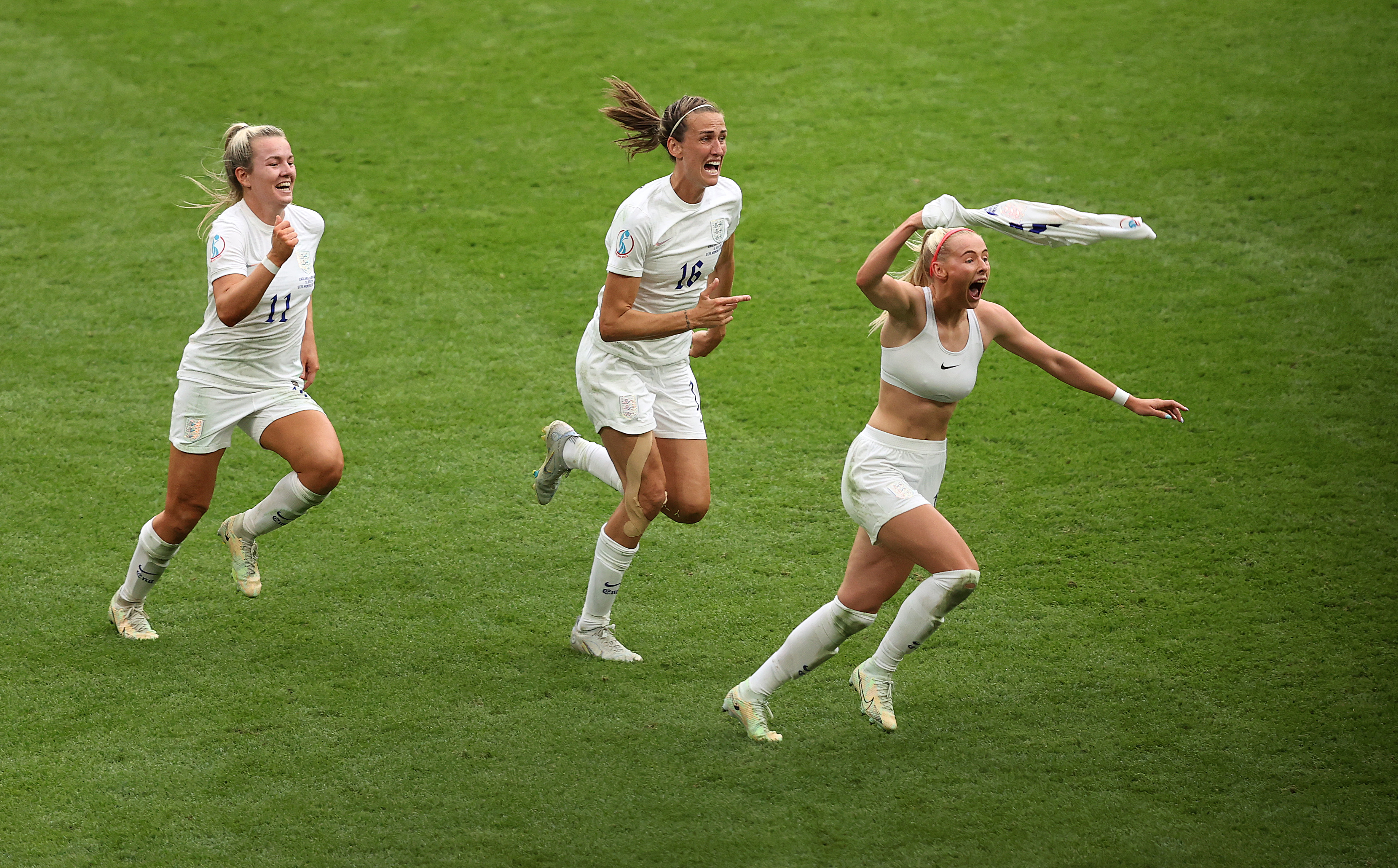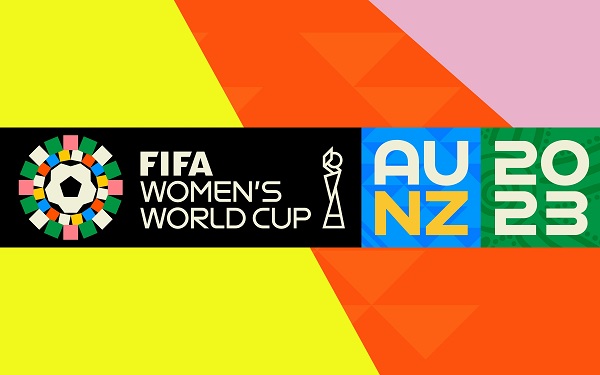With the start of the women’s World Cup in July 2023, discussions and debates on gender equality in football are likely to be commonplace, particularly surrounding the coverage of the women’s game. While there have been advances in recent times, the media’s coverage of women’s football has been consistently inadequate, especially when compared to the men’s game.
The Lions and Lionesses recent trajectories
Throughout the late 2010s the journeys of the England men’s and women’s national football teams followed similar paths. Both reached the semi-finals of World Cup tournaments and were considered among the favourites in their respective 2020 and 2022 European competitions. The women’s team, known as the Lionesses, competed as hosts during the 2022 European Championship, and while the men’s competition was held across eleven cities throughout Europe, England played six of their seven matches at Wembley Stadium in London. Interestingly, both teams experienced similar trajectories throughout their campaigns too, with each victory fuelling public confidence in England’s prospects of securing their first major football trophy since the men’s World Cup triumph in 1966. With the men’s team suffering a penalty shoot-out defeat to Italy in the final in July 2021, it was the Lionesses who ultimately achieved the feat of ‘bringing football home’, clinching an extra-time victory over Germany in the final on 31 July 2022.
 Chloe Kelly celebrates her winning Euros 2022 goalEngland players Chloe Kelly, Jill Scott and Lauren Hemp celebrating a goal
Chloe Kelly celebrates her winning Euros 2022 goalEngland players Chloe Kelly, Jill Scott and Lauren Hemp celebrating a goal
Where does social media fit into this?
The Football Association (FA) has set its vision for 2020–24 to be the unification of the game and the inspiration of the nation, with a focus on providing ‘football for all’. This encompasses the promotion of both men’s and women’s football. The growth of the internet and social media has revolutionised the way sports federations, including the FA, and athletes connect with their supporters. These platforms allow them to directly engage with fans, bypassing traditional media channels like newspapers and television. This shift has particularly benefited women’s sports, which historically received limited media coverage. Research indicates that social media, with its extensive reach and low costs, presents an opportunity for women’s sports to overcome financial barriers and connect with fans, contributing to a more level playing field with men’s sports. However, there has been limited investigation into how governing bodies utilise platforms such as Twitter to promote their teams, and until 2023, no research had compared the coverage of men’s and women’s teams through their respective governing bodies’ social media accounts.
How does the FA’s promotion of their men’s and women’s teams compare?
I conducted a content analysis of two Twitter accounts, @England and @Lionesses, during the 2020 (men’s) and 2022 (women’s) European Championships. A total of 2,942 tweets were collected and analysed. The overall findings revealed that the FA tweeted more frequently from the @Lionesses account during the women’s competition compared to the @England account during the men’s tournament. Throughout the women’s tournament, the FA made efforts to generate interest in the Lionesses by introducing Lionesses Live, a daily broadcast that featured access and interviews from the England camp. This initiative was the focus of a significant portion of the tweets from the @Lionesses account.
In contrast, the FA tweeted far less frequently from its @England account during the women’s tournament, with an 80% decrease in comparison. Similar patterns were observed during the men’s tournament, with substantial tweeting from @England. Likewise to Lionesses Live, the men were involved in a daily Lion’s Den programme, which was broadcast on the FA’s social media channels and was regularly promoted through Twitter.
What does this tell us?
The FA’s extensive use of Twitter to promote the Lionesses during the 2022 European Championship highlights the potential of social media as a powerful tool for promoting gender equality in sport. Indeed, @Lionesses was followed by 192,000 Twitter users at the start of the data collection on the women’s tournament and this increased to 363,600 users by the final day of data collection. Social media provides a more equitable platform for women’s sports teams, addressing issues of representation and visibility. While it is important to acknowledge the FA’s substantial coverage of the women’s team through their @Lionesses account, it is essential to approach these compliments with some caution. The findings reveal an underlying gender gap, even in the absence of the traditional media. Although the coverage favoured the Lionesses during the women’s European Championship, it was primarily targeted towards the followers of the team’s dedicated Twitter account, which may imply that the FA considers the women’s team to be of lesser importance as they did not provide similarly extensive coverage through their much more widely followed @England account.
 Using social media to stay up to dateA person using a mobile device
Using social media to stay up to dateA person using a mobile device
In a broader sense, the FA could be seen as reinforcing the gendered underrepresentation present in traditional media coverage. However, it would be counterproductive to solely criticise the FA for preserving gender divisions by offering limited coverage of the Lionesses through their @England account. Throughout the 2022 European Championship, the Lionesses were promoted as equals to their male counterparts, in terms of quantitative coverage, from the FA via their specific Twitter account. This demonstrates a positive shift in the overall representation of women’s football on social media and provides a cautiously optimistic outlook for the future.
Conclusion
In contrast to earlier studies that predominantly examined gender representation in traditional media, this study offers one of the initial and distinct investigations into sports reporting through the lens of social media usage by governing bodies. Recognising that sports organisations have the ability to promote equity in their coverage through social media, these findings carry the potential to influence the social media departments of such organisations. Specifically, it highlights the importance for organisations that advocate for equality to ensure that their online communication aligns with their values and effectively reflects gender equity.
Despite the financial precariousness of women’s football becoming increasingly apparent during the COVID-19 pandemic, throughout a four-week period in July 2022 the Lionesses became the centrepiece of what may become a transition in how women’s football is consumed within sports culture, particularly in England. This contributed to a small step forward in the representation of female sports more broadly in the UK, as evidenced by the announcement of a major governmental review of women’s football aimed at evaluating the game’s potential audience reach and growth.
However, even though we argue that there has been a positive change in the portrayal of women's football after the Lionesses' win, we need to be cautious in suggesting that the FA’s representation through a dedicated Lionesses Twitter account is a substantial indication of progress. If the FA truly intends to promote both their men’s and women’s national teams equally, they might want to reconsider their current social media strategy. By treating their @England account as the primary men’s account and promoting the women’s team separately, albeit to a significant extent, they inadvertently imply a disparity in their approach.
With the women’s World Cup in Australia and New Zealand looming, it will be interesting to see if there are any changes to the FA’s social media activity
This research has been published in the International Review for the Sociology of Sport.








Rate and Review
Rate this article
Review this article
Log into OpenLearn to leave reviews and join in the conversation.
Article reviews